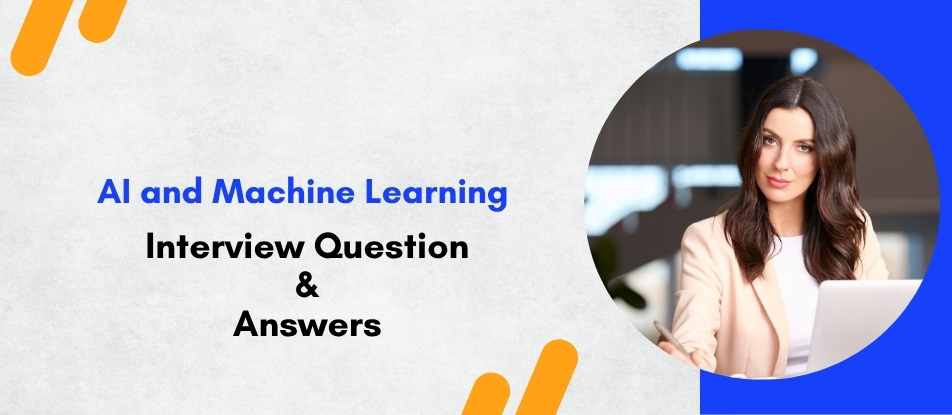
This AI and Machine Learning course equips learners with in-depth knowledge of algorithms, neural networks, and data-driven decision-making. Participants will explore supervised, unsupervised, and reinforcement learning, along with deep learning and model deployment strategies. Through practical projects and case studies, the course builds skills for real-world applications in automation, analytics, and intelligent systems—ideal for aspiring data scientists, developers, and tech professionals seeking a future-ready career in AI.
AI & Machine Learning Training Interview Questions Answers - For Intermediate
1. What is feature scaling, and why is it important in machine learning?
Feature scaling ensures that numerical input features are on the same scale, especially important for algorithms like k-NN, SVM, and gradient descent-based models. Without scaling, features with larger ranges can dominate others, skewing the model. Common methods include Min-Max scaling (normalization) and Standardization (Z-score), both of which help improve training efficiency and model accuracy.
2. What is one-hot encoding, and when would you use it?
One-hot encoding is a method used to convert categorical variables into a binary matrix form where each category is represented by a separate column with 0s and 1s. It is used when categorical data is nominal (i.e., has no intrinsic order). This technique prevents the model from assuming a hierarchical relationship among categories, which would happen with label encoding.
3. What is the difference between stochastic, batch, and mini-batch gradient descent?
Batch gradient descent computes gradients using the entire dataset, leading to stable but slow convergence. Stochastic gradient descent (SGD) updates the model using one data point at a time, which speeds up training but introduces noise. Mini-batch gradient descent balances both, processing small batches that improve convergence speed and stability. It’s widely used in practice, especially with large datasets.
4. Explain the role of a cost/loss function in training a model.
A loss function quantifies how well a model’s predictions match the actual results. During training, the goal is to minimize this loss function so that the model becomes more accurate. For regression tasks, Mean Squared Error is common, while for classification, cross-entropy loss is often used. The choice of loss function directly affects model performance and learning dynamics.
5. What is a support vector machine (SVM), and how does it work?
SVM is a supervised learning algorithm used for classification and regression tasks. It works by finding the optimal hyperplane that separates data points of different classes with the maximum margin. SVM can handle non-linear data by using kernel functions like RBF or polynomial kernels. It's effective for high-dimensional spaces and small-to-medium-sized datasets.
6. What is a kernel trick in SVM?
The kernel trick allows SVMs to transform data into higher-dimensional space without explicitly computing the transformation. This makes it possible to classify data that is not linearly separable in the original space. Common kernels include the Radial Basis Function (RBF), polynomial, and sigmoid kernels. This trick greatly enhances the flexibility of SVMs for complex datasets.
7. What is ensemble learning?
Ensemble learning combines multiple base models to produce a stronger model. It works on the principle that a group of weak learners can come together to form a robust predictor. Techniques include bagging (e.g., Random Forest), boosting (e.g., XGBoost), and stacking. Ensemble methods often lead to better accuracy, reduced variance, and improved generalization.
8. How does the k-Nearest Neighbors (k-NN) algorithm work?
k-NN is a simple, non-parametric algorithm used for classification and regression. It classifies a data point based on how its neighbors are classified—essentially, it looks at the ‘k’ closest training examples and predicts the majority class (or average value in regression). It requires no training phase but can be computationally expensive during inference.
9. What is Naive Bayes and why is it considered “naive”?
Naive Bayes is a probabilistic classifier based on Bayes’ theorem. It is termed "naive" because it assumes independence between every pair of features, which is rarely true in real-world data. Despite this assumption, Naive Bayes often performs well, especially in text classification problems like spam filtering and sentiment analysis due to its speed and simplicity.
10. What is the curse of dimensionality in machine learning?
The curse of dimensionality refers to the challenges that arise when dealing with high-dimensional data. As the number of features increases, the volume of the feature space grows exponentially, making data sparse and models less effective. It affects distance-based algorithms like k-NN and increases computational cost. Dimensionality reduction techniques like PCA help mitigate this issue.
11. What are precision, recall, and F1-score?
Precision measures the accuracy of positive predictions (true positives / predicted positives), while recall measures how many actual positives were correctly predicted (true positives / actual positives). The F1-score is the harmonic mean of precision and recall, balancing both metrics. These are critical when dealing with imbalanced datasets where accuracy alone is misleading.
12. What is transfer learning?
Transfer learning is a technique where a pre-trained model on one task is adapted to a different but related task. This is especially useful in deep learning, where models like ResNet or BERT are fine-tuned on smaller datasets. It saves training time and computational resources and often leads to better performance, especially when labeled data is scarce.
13. How does a convolutional neural network (CNN) work?
CNNs are specialized neural networks for processing grid-like data such as images. They use convolutional layers to extract spatial features, followed by pooling layers to reduce dimensionality, and fully connected layers for classification. CNNs are highly effective in tasks like object detection and image recognition due to their ability to capture hierarchical patterns.
14. What are word embeddings in NLP?
Word embeddings are dense vector representations of words that capture semantic meaning. Models like Word2Vec, GloVe, and FastText transform words into continuous vector spaces where similar words are close together. These embeddings help models understand context and improve performance in NLP tasks like translation, sentiment analysis, and question answering.
15. What is reinforcement learning and how is it different from supervised learning?
Reinforcement learning (RL) is an area of ML where an agent learns to take actions in an environment to maximize cumulative rewards. Unlike supervised learning, RL does not learn from labeled datasets but from the consequences of actions through rewards or penalties. It’s widely used in robotics, game playing (like AlphaGo), and recommendation systems.
AI & Machine Learning Training Interview Questions Answers - For Advanced
1. What are the differences between parametric and non-parametric models in machine learning?
Parametric models make assumptions about the functional form of the data and summarize it using a fixed number of parameters. Examples include linear regression and logistic regression, where the relationship between input features and outputs is defined by a specific formula. These models are computationally efficient and require less data to train but may struggle with capturing complex patterns if their assumptions are too restrictive. In contrast, non-parametric models do not assume a specific form and can adapt their complexity based on the data. Examples include decision trees, k-nearest neighbors, and kernel methods. These models can represent more flexible relationships but often require more data and computational power. Choosing between the two depends on the trade-off between interpretability, flexibility, and the size of the dataset.
2. How does the BERT architecture work, and what makes it unique compared to previous NLP models?
BERT (Bidirectional Encoder Representations from Transformers) revolutionized NLP by introducing a deeply bidirectional transformer-based model pre-trained on large corpora using masked language modeling and next sentence prediction. Unlike traditional models that read text either left-to-right or right-to-left, BERT considers both directions simultaneously, allowing it to better understand context and semantics. During pre-training, BERT randomly masks some tokens and trains the model to predict them using the surrounding context. It is then fine-tuned on downstream tasks like question answering, named entity recognition, and sentiment analysis. Its fine-tuning mechanism allows BERT to be highly versatile across different NLP tasks without modifying the base architecture significantly. The attention mechanism enables BERT to grasp word dependencies, even when they are far apart, setting new benchmarks in various NLP benchmarks.
3. What are the main components of the ROC curve, and how does it help evaluate model performance?
The ROC (Receiver Operating Characteristic) curve is a graphical representation that illustrates a classifier's performance across all classification thresholds. It plots the True Positive Rate (Recall) against the False Positive Rate, allowing evaluation of the trade-off between sensitivity and specificity. A model that randomly guesses will lie on the diagonal line (AUC = 0.5), while a perfect classifier would reach the top-left corner (AUC = 1). The Area Under the Curve (AUC) quantifies the model’s ability to distinguish between classes, regardless of class imbalance or threshold choice. ROC curves are especially useful in binary classification tasks, and comparing multiple models using AUC helps identify the best-performing one across a range of thresholds rather than a single decision point.
4. What are variational autoencoders (VAEs), and how do they differ from traditional autoencoders?
Variational Autoencoders (VAEs) are a type of generative model that combines principles from autoencoders and probabilistic graphical models. While traditional autoencoders learn a deterministic encoding of input data into a latent space and then reconstruct it, VAEs assume that the latent space follows a probability distribution—typically Gaussian. Instead of encoding input to a single point, VAEs encode it as a distribution over the latent space, allowing for more robust and continuous generation of new samples. The training involves minimizing the reconstruction loss and the Kullback–Leibler divergence between the learned latent distribution and the prior. This enables VAEs to generate smooth and interpretable latent spaces, making them useful for generative tasks and unsupervised representation learning.
5. Explain the concept of model interpretability and why it is crucial in AI applications.
Model interpretability refers to the degree to which a human can understand the internal mechanics and decision logic of a machine learning model. It is particularly crucial in domains like healthcare, finance, and law, where decisions impact human lives and must be explainable for ethical, legal, and trust reasons. While simple models like linear regression and decision trees are inherently interpretable, complex models like deep neural networks often act as “black boxes.” Techniques such as SHAP values, LIME (Local Interpretable Model-agnostic Explanations), and feature importance plots are used to approximate and visualize model behavior. Interpretability not only builds user trust but also helps identify biases, errors, and opportunities for improvement, contributing to responsible AI deployment.
6. What is a Markov Decision Process (MDP), and how is it used in reinforcement learning?
A Markov Decision Process (MDP) provides a mathematical framework for modeling decision-making where outcomes are partly random and partly under the control of an agent. It is defined by a tuple (S, A, P, R, γ) where S is the set of states, A is the set of actions, P is the transition probability, R is the reward function, and γ is the discount factor. The key property of an MDP is the Markov property, which asserts that the future state depends only on the current state and action, not the past. MDPs are foundational in reinforcement learning algorithms such as value iteration, policy iteration, and Q-learning, as they formalize how agents learn optimal policies through trial and error, with the goal of maximizing expected cumulative rewards.
7. How does the attention mechanism improve performance in computer vision models like Vision Transformers (ViT)?
In Vision Transformers (ViT), the attention mechanism allows the model to focus on different parts of the image globally rather than relying on fixed-size convolutional kernels like in CNNs. ViT treats an image as a sequence of patches (e.g., 16x16 pixels) and applies self-attention to model the relationships between patches. This enables the model to capture long-range dependencies and spatial hierarchies more effectively. Unlike CNNs that are inherently local and translation-invariant, attention-based models can learn more flexible and context-aware representations. ViTs have shown competitive or superior performance on image classification tasks, especially when trained on large datasets, marking a shift from traditional convolution-based architectures to transformer-based vision models.
8. What is multi-task learning, and how does it benefit model training?
Multi-task learning is a machine learning paradigm where a single model is trained on multiple related tasks simultaneously, sharing representations between them. The idea is that knowledge from one task can help improve the performance of other tasks by introducing an inductive bias. For example, in NLP, a model might be trained to perform both sentiment analysis and part-of-speech tagging. This encourages the model to learn more general features that are useful across tasks, leading to better generalization, reduced overfitting, and improved data efficiency. Challenges include designing appropriate task weighting strategies and preventing negative transfer, where one task's learning harms another. Nevertheless, multi-task learning has become a powerful tool in building robust and efficient AI systems.
9. How do graph neural networks (GNNs) work, and what are their key applications?
Graph Neural Networks (GNNs) are specialized neural architectures that operate on graph-structured data, where relationships between entities are as important as the entities themselves. GNNs learn node representations by aggregating information from neighboring nodes in a recursive manner. Each node's embedding is updated through message-passing mechanisms across its connections, allowing it to capture local structure and global context. GNNs have found applications in social network analysis, molecular chemistry (e.g., predicting molecule properties), recommendation systems, and knowledge graph completion. Variants like Graph Convolutional Networks (GCNs) and Graph Attention Networks (GATs) enhance performance by incorporating edge weights and attention mechanisms. GNNs enable deep learning on non-Euclidean domains, expanding the range of tasks that can benefit from AI.
10. What is data leakage, and how can it affect model performance?
Data leakage occurs when information from outside the training dataset—particularly from the test set or future observations—unintentionally influences the model during training. This can lead to overly optimistic performance metrics, as the model has access to data it wouldn’t see in a real-world scenario. Leakage can occur in many ways, such as using target variables during feature engineering, not properly separating time-based data in time series tasks, or failing to exclude future values in rolling-window calculations. Detecting and preventing data leakage requires careful pipeline management, rigorous validation schemes, and domain knowledge. Failing to address it can render models useless or dangerous when deployed in production environments.
11. How does early stopping work as a regularization method in deep learning?
Early stopping is a form of regularization that prevents overfitting by halting training when the model's performance on a validation set starts to degrade. It involves monitoring a performance metric, such as validation loss or accuracy, and stopping training after the metric fails to improve for a predefined number of epochs (patience). This prevents the model from fitting noise in the training data, especially when training for many epochs. Early stopping is particularly useful in deep learning where models can easily overfit with prolonged training. It is often used in combination with other regularization techniques like dropout and weight decay for better generalization.
12. What is the difference between bagging and stacking in ensemble learning?
Bagging (Bootstrap Aggregating) and stacking are both ensemble learning techniques, but they differ in methodology. Bagging builds multiple instances of the same model type on different subsets of data sampled with replacement. The final prediction is typically obtained through majority voting (classification) or averaging (regression). Random Forest is a classic example of bagging. Stacking, on the other hand, involves training multiple different model types (base learners) and then using their outputs as features to train a final meta-model that learns how to best combine them. Stacking often provides better performance due to its diversity, but it is more complex and harder to tune than bagging.
13. What is CatBoost, and how does it handle categorical features better than traditional methods?
CatBoost is a gradient boosting algorithm developed by Yandex that is specifically designed to handle categorical features efficiently. Unlike traditional methods that require explicit preprocessing like one-hot encoding, CatBoost uses ordered target statistics and permutation-driven approaches to encode categorical variables during training. This reduces overfitting and bias, especially in datasets with high cardinality features. Additionally, CatBoost incorporates advanced techniques such as symmetric tree structures, oblivious decision trees, and built-in support for missing values. These features make CatBoost highly efficient, accurate, and user-friendly for a wide range of supervised learning tasks, especially in structured data scenarios.
14. What are the ethical concerns surrounding AI and how can they be mitigated?
AI systems, if not carefully designed, can reinforce biases, infringe on privacy, and create systems that are opaque or unaccountable. Algorithmic bias can arise when training data reflects historical inequalities, leading to unfair decisions in hiring, lending, or law enforcement. Lack of transparency in black-box models can hinder accountability and trust. Other concerns include data privacy, especially with models trained on sensitive information, and job displacement due to automation. Mitigation strategies include using fairness-aware algorithms, implementing explainability tools (e.g., SHAP, LIME), performing regular audits, involving diverse stakeholders in development, and adhering to legal and ethical frameworks like GDPR and AI ethics guidelines from organizations like IEEE or OECD.
15. What is meta-learning (learning to learn), and how is it used in AI?
Meta-learning, or learning to learn, is a field of AI that focuses on building models that can adapt quickly to new tasks using limited data, by leveraging prior learning experiences. The core idea is to train a meta-learner across many tasks so that it can efficiently learn new ones with minimal updates. This is particularly useful in few-shot learning and robotics, where data is scarce or expensive to collect. Approaches include model-based methods (learning fast-update rules), metric-based methods (learning distance functions), and optimization-based methods like MAML (Model-Agnostic Meta-Learning), which finds good initialization parameters that adapt well with few gradient steps. Meta-learning has opened up new possibilities for generalization and adaptability in AI, pushing it closer to human-like learning.
Course Schedule
| Jan, 2026 | Weekdays | Mon-Fri | Enquire Now |
| Weekend | Sat-Sun | Enquire Now | |
| Feb, 2026 | Weekdays | Mon-Fri | Enquire Now |
| Weekend | Sat-Sun | Enquire Now |
Related Courses
Related Articles
Related Interview
Related FAQ's
- Instructor-led Live Online Interactive Training
- Project Based Customized Learning
- Fast Track Training Program
- Self-paced learning
- In one-on-one training, you have the flexibility to choose the days, timings, and duration according to your preferences.
- We create a personalized training calendar based on your chosen schedule.
- Complete Live Online Interactive Training of the Course
- After Training Recorded Videos
- Session-wise Learning Material and notes for lifetime
- Practical & Assignments exercises
- Global Course Completion Certificate
- 24x7 after Training Support



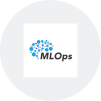



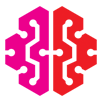
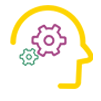
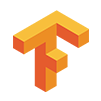
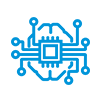
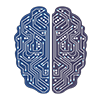

 Join our Live Instructor-Led online classes delivered by industry experts
Join our Live Instructor-Led online classes delivered by industry experts